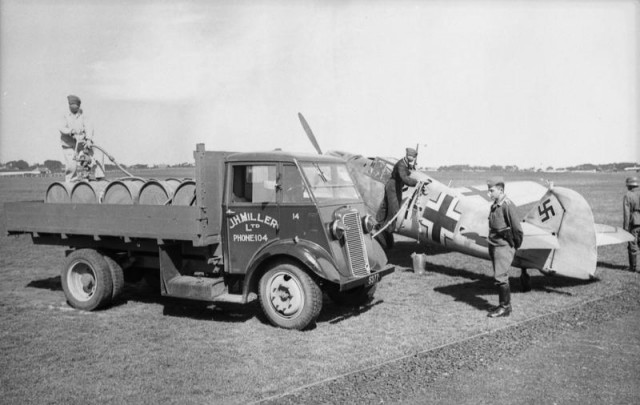 A German propaganda picture showing a British truck refuelling a BF 109 in the Channel Islands (Source: Bundesarchiv)
A German propaganda picture showing a British truck refuelling a BF 109 in the Channel Islands (Source: Bundesarchiv)
The Messerschmitt Bf 109, commonly called the Me 109 (most often by Allied aircrew and even amongst the German aces themselves, even though this was not the official German designation), is a German World War II fighter aircraft designed by Willy Messerschmitt and Robert Lusser during the early to mid-1930s.
The “Bf 109” designation was issued by the German ministry of aviation and represents the developing company Bayerische Flugzeugwerke and a rather arbitrary figure. It was one of the first truly modern fighters of the era, including such features as all-metal monocoque construction, a closed canopy, and retractable landing gear. It was powered by a liquid-cooled, inverted-V12 aero engine.
The Bf 109 first saw operational service during the Spanish Civil War and was still in service at the dawn of the jet age at the end of World War II, during which time it was the backbone of the Luftwaffe’s fighter force. From the end of 1941, the Bf 109 was steadily being supplemented by the superior Focke-Wulf Fw 190.
Originally conceived as an interceptor, later models were developed to fulfill multiple tasks, serving as bomber escort, fighter-bomber, day-, night-, all-weather fighter, ground-attack aircraft, and as reconnaissance aircraft. It was supplied to and operated by several states during World War II and served with several countries for many years after the war. The Bf 109 was the most produced fighter aircraft in history, with a total of 33,984 airframes produced from 1936 up to April 1945.
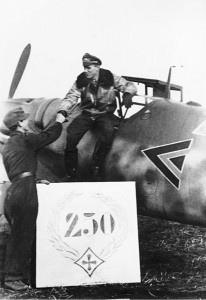 Pilot Major Günther Rall when getting out of his plane Messerschmitt Me 109 after his 250th aerial victory 1943
Pilot Major Günther Rall when getting out of his plane Messerschmitt Me 109 after his 250th aerial victory 1943
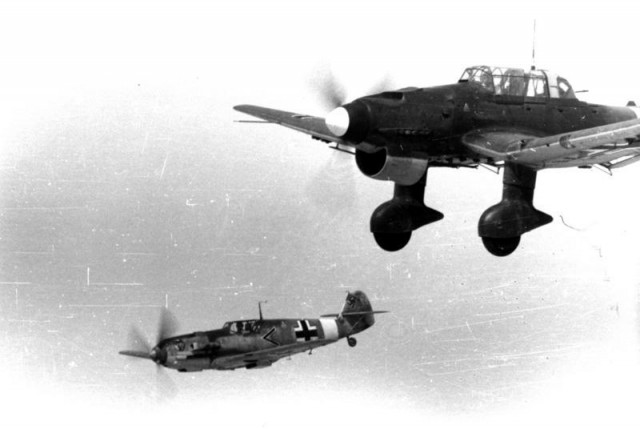
Messerschmitt Me 109 E of I / Jagdgeschwader 27 (JG 27) and Junkers Ju 87 B of the II. / St G 2 (Wikimedia commons: Bundesarchiv)
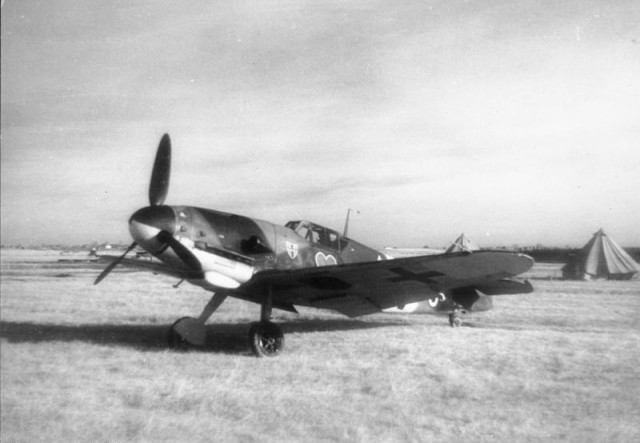 Russia-Nord.- fighter Messerschmitt Me 109 G-2 of Jagdgeschwader 54 (III / JG 54.) “Green Heart” on airfield (Wikimedia Commons: Bundesarchiv)
Russia-Nord.- fighter Messerschmitt Me 109 G-2 of Jagdgeschwader 54 (III / JG 54.) “Green Heart” on airfield (Wikimedia Commons: Bundesarchiv)
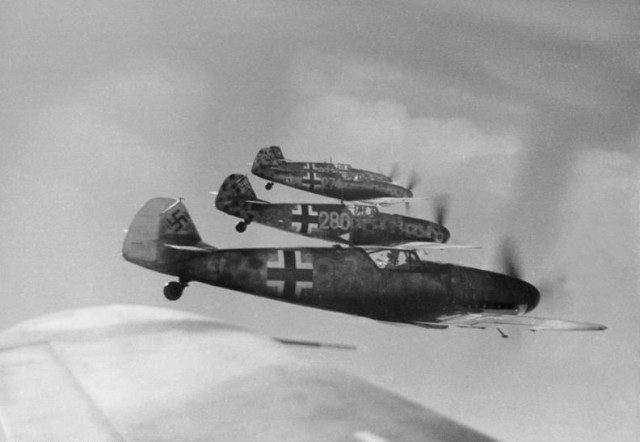 Messerschmitt Me 109s in flight; after July 20, 1944; One kp Lw zbV
Messerschmitt Me 109s in flight; after July 20, 1944; One kp Lw zbV
The Bf 109 was flown by the three top-scoring German fighter aces of World War II, who claimed 928 victories among them while flying with Jagdgeschwader 52, mainly on the Eastern Front, as well as by Hans-Joachim Marseille, the highest scoring German ace in the North African Campaign, scoring 158 victories.
It was also flown by several other aces from Germany’s allies, notably Finn Ilmari Juutilainen, the highest scoring non-German ace on the type with 58 victories flying the Bf 109G, and pilots from Italy, Romania, Croatia, Bulgaria and Hungary. Through constant development, the Bf 109 remained competitive with the latest Allied fighter aircraft until the end of the war.
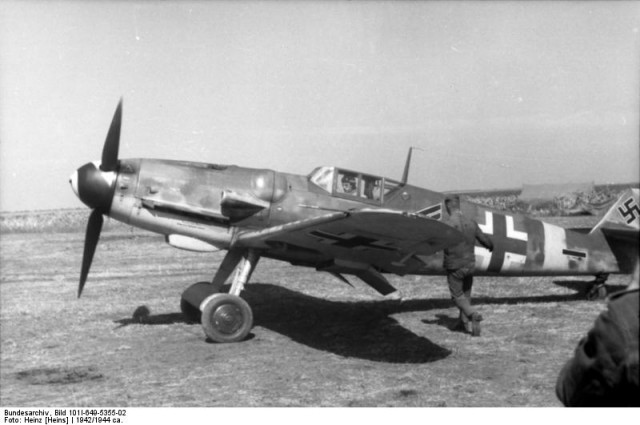 Gerhard Barkhorn’s Bf 109, commander of II./JG52, at Anapa on the Black Sea, Autumn 1943 (Wikimedia Commons: Bundesarchiv)
Gerhard Barkhorn’s Bf 109, commander of II./JG52, at Anapa on the Black Sea, Autumn 1943 (Wikimedia Commons: Bundesarchiv)
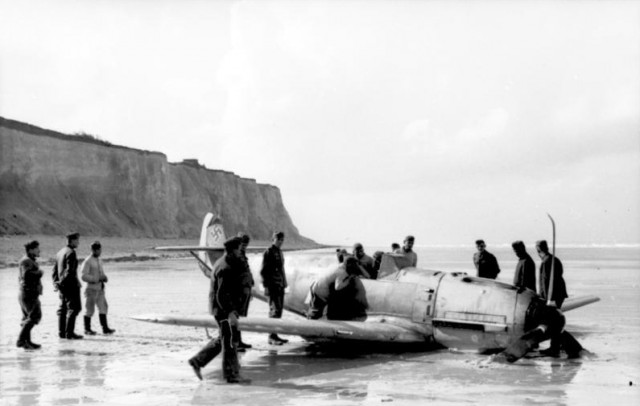 A 109 after a “very hard” landing in France
A 109 after a “very hard” landing in France
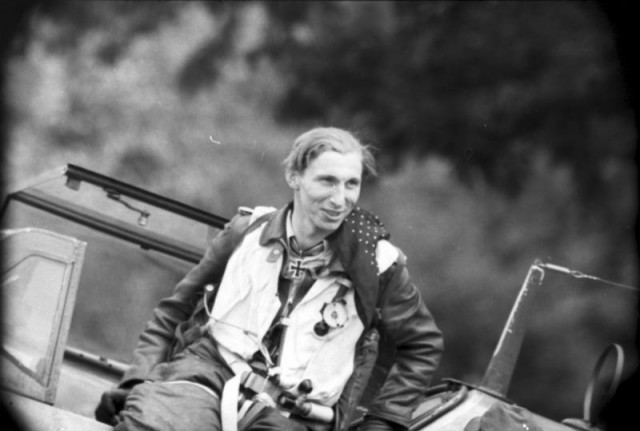 The pilot in this photo is most probably Klaus Mietusch, photo taken between 26 March 1944 and 18 November 1944.
The pilot in this photo is most probably Klaus Mietusch, photo taken between 26 March 1944 and 18 November 1944.
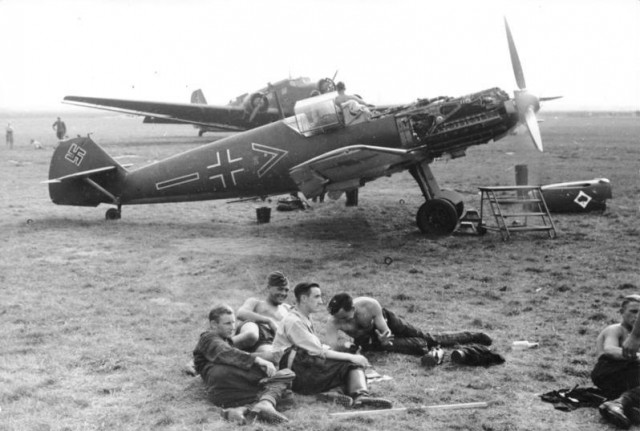 Luftwaffe crew of the Jagdgeschwader 53 fighter wing (also known as “Ace of Spades”) resting at an airfield in front of a Messerschmitt Bf 109 with an open bonnet. Behind in the background is a Junkers Ju 52
Luftwaffe crew of the Jagdgeschwader 53 fighter wing (also known as “Ace of Spades”) resting at an airfield in front of a Messerschmitt Bf 109 with an open bonnet. Behind in the background is a Junkers Ju 52
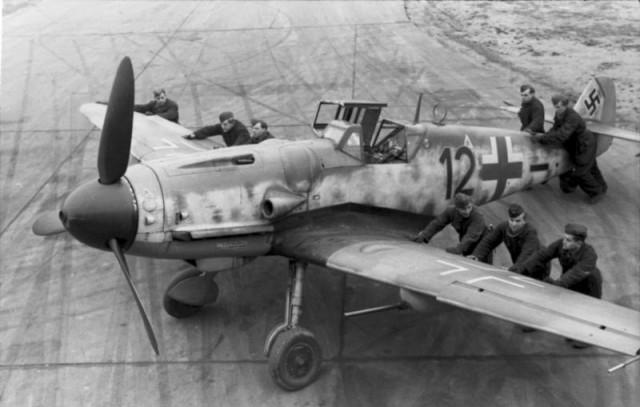 Messerschmitt Me 109 G-6 (with R6 gun package) (identifier black 12) of Jagdgeschwader 2 in France – September 1943
Messerschmitt Me 109 G-6 (with R6 gun package) (identifier black 12) of Jagdgeschwader 2 in France – September 1943
